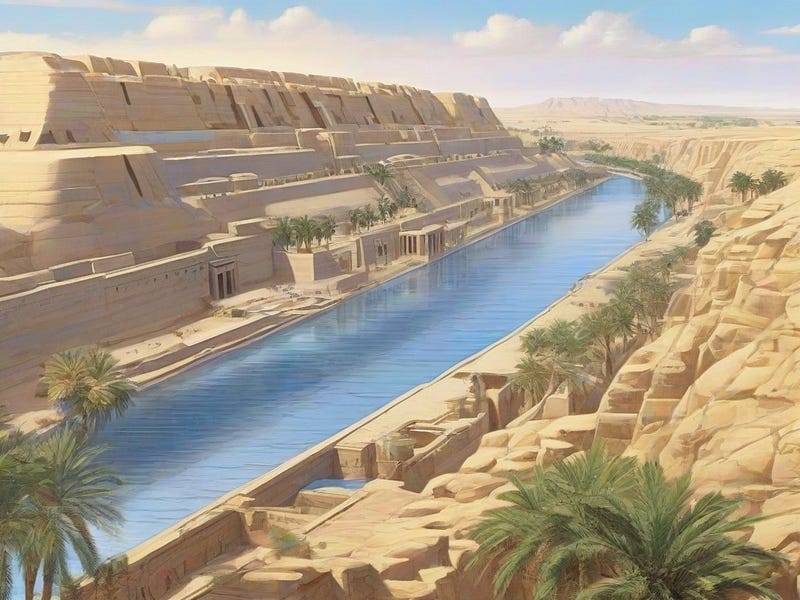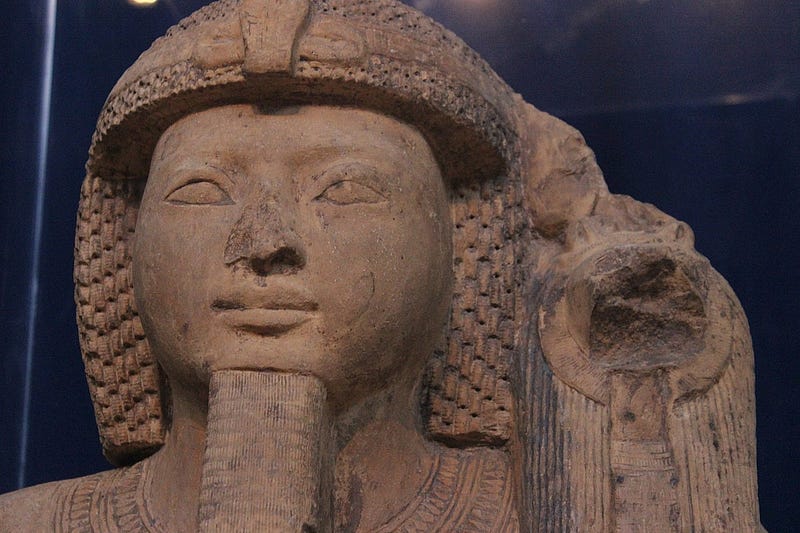Pharaoh Ramesses III's Fortress Reveals Significant Findings
Written on
The Fortress of Pharaoh Ramesses III
Recent excavations by Slovak archaeologists in the Nile Delta have brought to light a significant discovery: the moat that protected the fortress of Pharaoh Ramesses III. This ruler faced numerous challenges from both external and internal adversaries throughout his reign.

The Ancient Egyptian Civilization
While the ancient Egyptian civilization thrived for thousands of years, it also underwent periods of turmoil. The construction and maintenance of fortifications were vital, particularly in border regions and isolated areas. Located in the eastern Nile Delta at present-day Tell el-Retaba, one such fortress was strategically positioned facing Syro-Palestine.
A team from the Slovak Academy of Sciences (SAV) recently announced their findings from the initial weeks of excavations at Tell el-Retaba, revealing remnants of a fortress believed to date back to the reign of Ramesses III (1184–1153 BC). Instead of traditional walls, archaeologists uncovered traces of a moat, a defensive feature also utilized in medieval structures but already known to the Egyptians. A moat is defined as a deep trench, often filled with water, that encircles cities for protection.
This discovery was made at the westernmost section of the tell, an artificial mound created through centuries of habitation. The research team found evidence that this area of the ancient city had previously suffered from flooding caused by the Nile, a problem that only ceased with the construction of the Aswan High Dam in the 20th century.
The Function of the Moat
The moat itself was relatively shallow, measuring about 160 cm in depth with a gravel base. Although it wasn’t deep enough to completely thwart attackers, its design served a different strategic purpose.
"Intruders likely had to use ladders to navigate out of this gravel-filled trench. Ancient depictions suggest that attackers typically advanced using ladders. For defenders, the primary goal was not to prevent intruders from escaping the moat but to delay their assault, allowing them to gather in larger groups that could then be targeted with bows or slingshots," explains Egyptologist Dr. Jozef Hudec from the Institute of Oriental Studies at the Slovak Academy of Sciences, who is leading the research.
The source of the water that filled the moat remains unclear. It was likely groundwater, complicating current archaeological efforts.
"The present groundwater levels may not reflect those of ancient times, especially before the Aswan High Dam altered the flow of the Nile," notes Dr. Hudec.

The Complex Life of Ramesses III
Pharaoh Ramesses III led an eventful life. Notably, his reign marked the first recorded strike in history, where craftsmen from Thebes protested against their working conditions while constructing temples and tombs at the Ramesseum, the temple dedicated to Ramesses II the Great.
Additionally, a conspiracy emerged within his harem, driven by the absence of a designated Great Royal Wife to secure the throne for her offspring. One of his wives took drastic actions, leading to the execution, forced suicides, or permanent mutilation of those involved in the plot.
The Sacred Band of Thebes
The Sacred Band of Thebes was among the most fascinating military formations of ancient Greece, renowned for its unique structure and battlefield tactics.
This documentary delves into the extensive history of Egypt, highlighting its ancient civilizations and their contributions.
Explore the life of Ramses II and the monumental achievements that define this iconic Pharaoh's reign.
Support for Content Creators
Dear readers, I want to address a pressing issue for content creators like myself on Medium.com. Despite dedicating considerable effort to produce meaningful content, the compensation is often minimal. If you appreciate my articles, please consider supporting me on my "Buy Me a Coffee" page. Your contributions, regardless of size, can inspire me to continue creating engaging and thought-provoking material. Thank you for being part of this journey!

